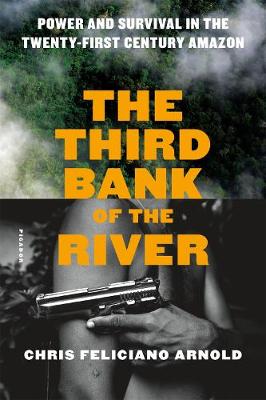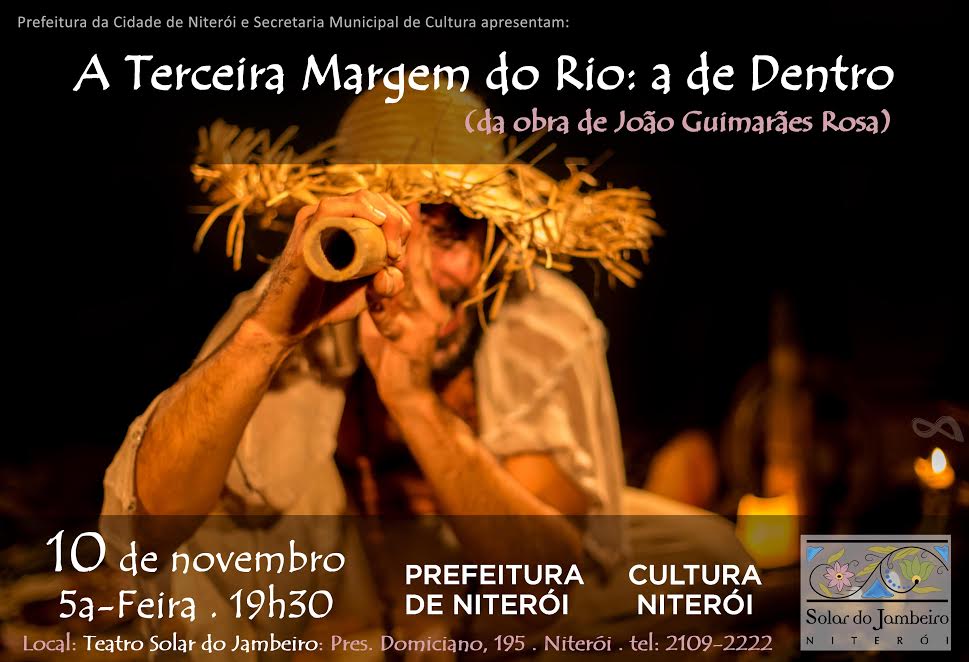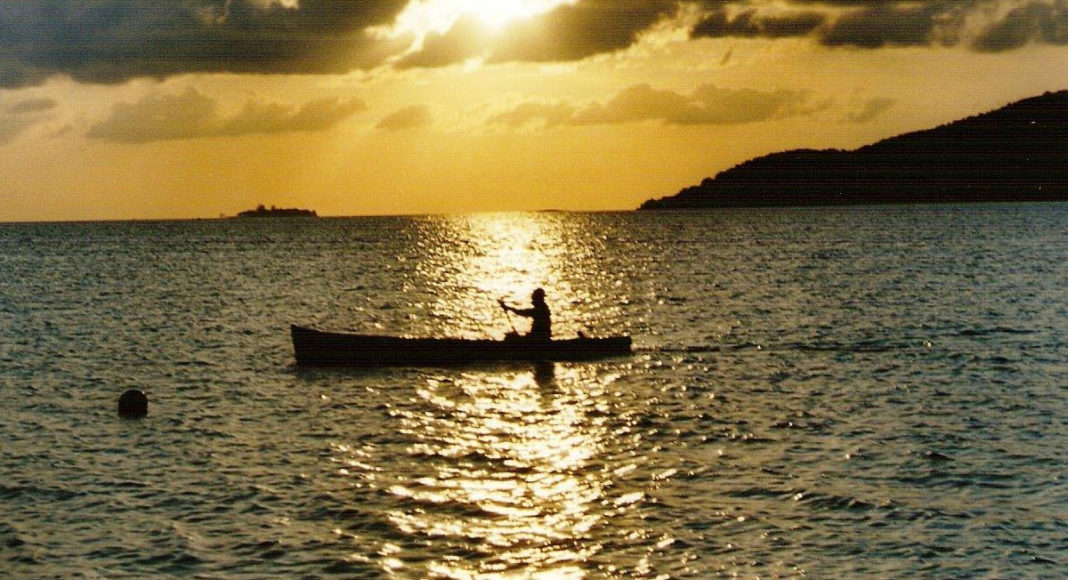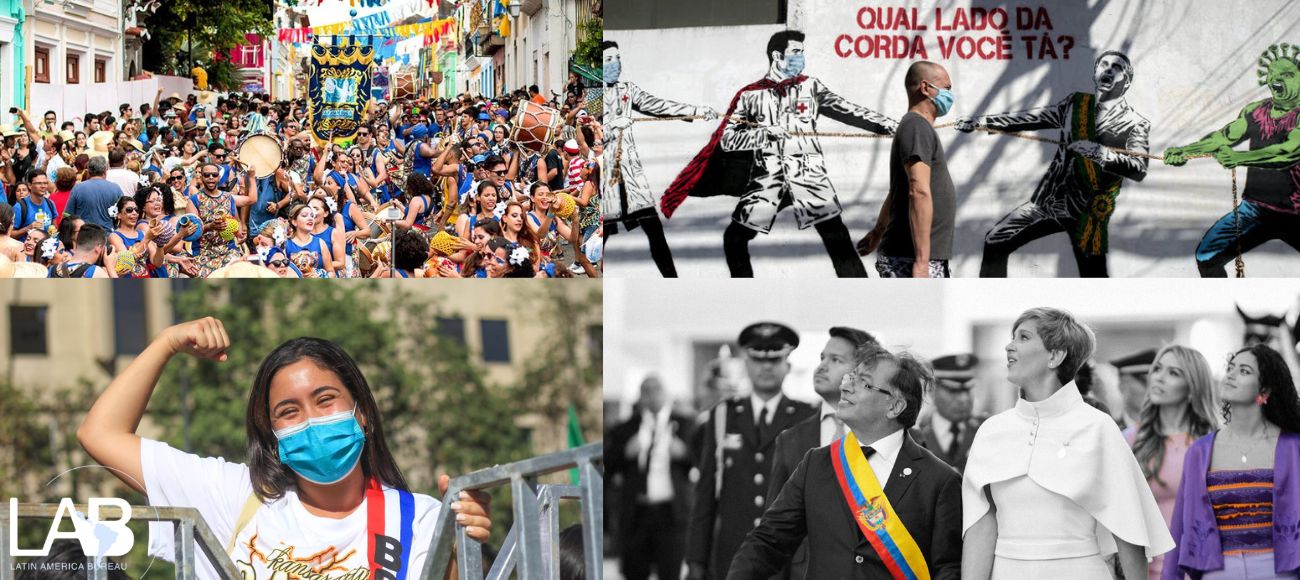BOOK REVIEW
Chris Feliciano Arnold, The Third Bank of the River. New York: Picador 2018
 This book has been classified as ‘travel-writing’, but it is much more than that. The author, Chris Feliciano Arnold, born in Brazil and adopted into a middle-class California family, tells the story of the Amazon river and its associated port-towns near the headwaters on the frontier between Brazil, Colombia and Peru – from the early days of the conquest to the present, through the lives of ordinary people engaged in epic struggles against forces beyond their control.
The title is taken from João Guimarães Rosa’s 1962 short story, A Terceira Margem do Rio (also a 1994 film directed by Nelson Pereira dos Santos), where a man abandons his family to live on a canoe on the river, never to return. Arnold does not tell us why he chose Rosa’s title: only that both tales move between the river and the shore, depicting anxiety at the disappearance of loved ones, the inevitability of death, the endurance of souls in the afterlife.
The deaths in Arnold’s story are not supernatural, but they are equally disturbing. Like Claude Lévi-Strauss before him, in his Tristes Tropiques of 1955, Arnold traces the ongoing demise of Brazil´s indigenous peoples at the hands of the colonizers. In homage to Lévi-Strauss, Arnold mixes the personal and the anthropological, though his own first person storyteller is more frontline journalist than scholar, more pícaro than poet.
This book has been classified as ‘travel-writing’, but it is much more than that. The author, Chris Feliciano Arnold, born in Brazil and adopted into a middle-class California family, tells the story of the Amazon river and its associated port-towns near the headwaters on the frontier between Brazil, Colombia and Peru – from the early days of the conquest to the present, through the lives of ordinary people engaged in epic struggles against forces beyond their control.
The title is taken from João Guimarães Rosa’s 1962 short story, A Terceira Margem do Rio (also a 1994 film directed by Nelson Pereira dos Santos), where a man abandons his family to live on a canoe on the river, never to return. Arnold does not tell us why he chose Rosa’s title: only that both tales move between the river and the shore, depicting anxiety at the disappearance of loved ones, the inevitability of death, the endurance of souls in the afterlife.
The deaths in Arnold’s story are not supernatural, but they are equally disturbing. Like Claude Lévi-Strauss before him, in his Tristes Tropiques of 1955, Arnold traces the ongoing demise of Brazil´s indigenous peoples at the hands of the colonizers. In homage to Lévi-Strauss, Arnold mixes the personal and the anthropological, though his own first person storyteller is more frontline journalist than scholar, more pícaro than poet.
 Arnold’s journey to the heart of darkness humanizes the story of twenty-first century Brazil—epitomized by the rise and fall of the city of Manaus and the violence thrust upon the city as a result of its strategic location. This Amazon is no less tragic than Lévi-Strauss’s: added to the mix of frontierspeople, garimpeiros, ranchers and squatters, are the Colombian drug cartels and the Brazilian dealers, who each year ship 300 tons of cocaine 700 miles down the Amazon river to Belém and across the Atlantic to the ports of Europe.
It is a story of mundane, normalized savagery, yet Arnold ensures that no one becomes a statistic. He creates a dual narrative of the urban life of poor white settlers juxtaposed with the struggle for survival of the first nations of Brazil – the last of the tribes of the world attempting to live in voluntary isolation from the depredations of modernization. With the help of occasional, often faint-hearted interventions by Brazil’s federal government, spurred on by the efforts of international non-governmental organizations, the remaining indigenous communities cling on to their fragile existence .
Brazil´s experience of colonization is not unique: the tale of the loss of the Amazon jungle and its peoples is repeated across those countries still blessed with rainforest, Bolivia, Peru, Colombia, Venezuela and Ecuador. Sadly, Arnold demonstrates that the impunity enjoyed by sadists such as the rubber-baron Julio César Arana in the early twentieth century is still alive and well one hundred years on.
Arnold’s journey to the heart of darkness humanizes the story of twenty-first century Brazil—epitomized by the rise and fall of the city of Manaus and the violence thrust upon the city as a result of its strategic location. This Amazon is no less tragic than Lévi-Strauss’s: added to the mix of frontierspeople, garimpeiros, ranchers and squatters, are the Colombian drug cartels and the Brazilian dealers, who each year ship 300 tons of cocaine 700 miles down the Amazon river to Belém and across the Atlantic to the ports of Europe.
It is a story of mundane, normalized savagery, yet Arnold ensures that no one becomes a statistic. He creates a dual narrative of the urban life of poor white settlers juxtaposed with the struggle for survival of the first nations of Brazil – the last of the tribes of the world attempting to live in voluntary isolation from the depredations of modernization. With the help of occasional, often faint-hearted interventions by Brazil’s federal government, spurred on by the efforts of international non-governmental organizations, the remaining indigenous communities cling on to their fragile existence .
Brazil´s experience of colonization is not unique: the tale of the loss of the Amazon jungle and its peoples is repeated across those countries still blessed with rainforest, Bolivia, Peru, Colombia, Venezuela and Ecuador. Sadly, Arnold demonstrates that the impunity enjoyed by sadists such as the rubber-baron Julio César Arana in the early twentieth century is still alive and well one hundred years on.
Gangster police
Arnold has created a Manaus of the imagination, a crime thriller of underworld characters – a cohort of gangster police who, over a period of six months in 2015, perpetrated a killing spree of children picked out at random in the streets and bars, in revenge for the death of an off-duty policeman, to which none of those murdered had any connection. Through the tireless work of the real-life heroic Inspector General Almada, this particular group of gangster police landed up in prison in 2016; but Arnold’s message is clear: this was a rare case of justice being served in Brazil. Arnold is careful to name the victims of the crimes, and each of the perpetrators, each of the cartel leaders directing operations from state prisons. He names the drug-barons, murderers, colluding politicians, police chiefs. No one is left unaccounted for: so that even if the killers are sprung from prison, the world will know who they are. Otherwise, this is a cautionary tale. Not least the colossal mistake of the Belo Monte dam, endorsed by the World Bank, whose 2016 act of contrition –their ‘Environmental and Social Framework’ which makes loans conditional on protection of the environment – has come far too late. But how can the World Bank, in its efforts to support the Sustainable Development Goals, compete against the US$10,000 awarded to each affected indigenous tribe to ensure their compliance with the new dam? This is cash that has divided indigenous communities; yet Arnold points out that the indigenous chiefs are canny enough to at least sell the land before it is stolen from them. The author does not romanticize the indigenous peoples, nor condemn them for commodifying their culture at the instigation of local guides needing to earn a living from Western tourists: ‘What songs and dances were not for sale?’ Arnold asks. For the indigenous peoples, the odds are stacked against them: the Brazilian government has neither the will nor the resources to protect them. Very few politicians have the courage to speak out against modernization: only former environment minister Marina Silva of the Sustainability Party is singled out as a politician of integrity. One of the local police chiefs comments that 90 per cent of the logging in the region is illegal. Game is becoming increasingly scarce as wildlife habitat diminishes and protected species such as the peccary, an important food source for indigenous people, are now smuggled down river to Belem.Beware of gifts
Arnold is also harsh in his criticism of twenty-first century US Protestant missionaries, who transport dentist chairs upriver – Fitzcarraldo-like – together with gifts of ice-cream with which to entice the Yanomami away from St Joseph – a graven image – towards their true god. Other missionaries receive a mixed press. At least they have some heroes of their own who gave their lives to protect the Indians, as was the case with American Catholic nun Dorothy Stang in 2005, whose killers were released early from their prison sentences. Arnold notes that 1,000 environmental activists have been killed in the Amazon since 1986. Yet despite their efforts, ‘many tribes sense doom on the horizon’, not least because young people leave their villages for the city. The hope is that the anthropologists and environmental activists will persuade the Txapawana and remaining Yanomami to preserve their way of life and their cultures, albeit with their satellite dishes, mobile phones and Whatsapp – accursed as the alcohol destroying their lives, but more powerful than spears as a defence mechanism. Not only have the indigenous Amazonians been assailed by dynamite, disease, arsenic-laced sugar and bulldozers, in recent years they have been bribed or coerced to act as mules to transport coca or cocaine across the border of Colombia into Brazil. So might social media in the end prove their salvation? The mantra of the United Nations is to ‘leave no one behind’ – yet this book leaves one wondering what is the advantage of getting ahead, as Manaus has done with its burgeoning population and trappings of modern urban life. But what of the remnants of the forest peoples? It is their wishes that have to prevail. In his reflection on the competing arguments of Survival International’s Fiona Watson and the University of Missouri’s Robert Walker, Arnold is effectively asking the question whether James’s S Scott’s hypothesis with regard to the The Art of Not Being Governed (2008) is still viable. The evidence Arnold provides suggests that the lawlessness of the loggers makes it impossible for those touched by their activities to remain self-governing. The Txapawana and remaining Yanomami living in voluntary isolation may require vaccination as well as government protection of their borders. For the rest of us, Arnold makes it clear that remaining in our armchairs is no longer an option. Linda Etchart © 2018Linda Etchart is a Lecturer in Human Geography at Kingston University, London, UK. She is a contributor to Voices of Latin America: Social Movements and the New Activism, Latin American Bureau/Practical Action, forthcoming January 2019.


